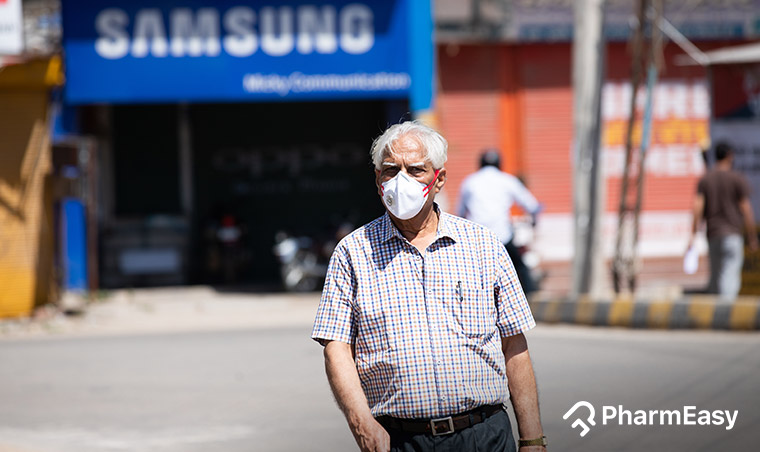What Is So Dangerous About The Second Wave Of COVID-19?
By Dr. Nikita Toshi +2 more

Get,

to manage your symptom
Get your,


4 Cr+ families
benefitted

OTP sent to 9988776655



You’ve successfully subscribed to receive
doctor-approved tips on
Whatsapp

Get ready to feel your best.

Hi There,



Register to Avail the Offer
Send OTPBy continuing, you agree with our Privacy Policy and Terms and Conditions

Hi There,

Trusted by 4 crore+ families

OTP sent to 9988776655



You have unlocked 25% off on medicines




Code: NU25

By Dr. Nikita Toshi +2 more
The number of active cases of COVID-19 has been steadily reducing since late September 2020 and it was then that most public places, schools, colleges and offices began opening their doors for regular operation.

Despite this, COVID protocols were being maintained with the utmost scrutiny in all such public places. As of February 2021, more than half of all the Indian states reported that there was not a single death due to COVID-19 and this ushered in some much-needed hope.
However, recent studies conducted by scientists at Delhi, using a mathematical model have examined that cases will be at a peak around 20th April 2021.
Table of Contents
Leading Indian scientists from the most renowned institutes and research centres have suggested that 2 distinctive factors can be used to trace this sudden and sharp rise of active cases in India.
In the case of a coronavirus variant, it may take time for the mutated virus to spread, depending on how contagious it is. A very transmissible variant such as delta can cause a faster acceleration in new cases leading to waves.
Dr. M.G. Kartheeka, MBBS, MD
With such a sharp rise in new cases of COVID-19, the states of Maharashtra, Karnataka, Tamil Nadu, Delhi, Haryana and Uttar Pradesh have been marked to be high-risk states that are already experiencing the effects of the Second Wave.
Despite the rapid testing and the extensive vaccination drives undertaken by the government, the daily caseload of infected people is averaging at around 55,000 as opposed to the few couple thousand last year.
The second wave of Covid was more severe than the first wave and is attributed majorly to insufficient vaccinations and human behaviour of not following covid appropriate behaviour. Following appropriate measures for Covid will be very essential to prevent any further outbreaks.
Dr. Ashish Bajaj – M.B.B.S, M.D.
Many states like Gujarat, Maharashtra, Haryana and Punjab have been counting the number of cases peaking either equal to or more than their earlier records from the previous year. Although states like West Bengal, Andhra Pradesh, Bihar and Uttar Pradesh are likely to be still in the infant stages of the Second Wave, state governments have ramped up their testing and inoculation drives. Scientists expect this Second Wave to last more than 2 or 3 months, given the progress of vaccinations of a population that is 1.3 billion strong.
Manindra Agarwal of IIT Kharagpur who is famous for pioneering the ‘Super Model’ has stated that this Second Wave is most likely to see a sharp fall following April. Nevertheless, taking comfort in the low death rates is not the way to go and we should all follow the stipulated COVID protocols whenever venturing out.
With these alarming situations around, take good care of your health with regular checkups through PharmEasy!

Disclaimer: The information provided here is for educational/awareness purposes only and is not intended to be a substitute for medical treatment by a healthcare professional and should not be relied upon to diagnose or treat any medical condition. The reader should consult a registered medical practitioner to determine the appropriateness of the information and before consuming any medication. PharmEasy does not provide any guarantee or warranty (express or implied) regarding the accuracy, adequacy, completeness, legality, reliability or usefulness of the information; and disclaims any liability arising thereof.
Links and product recommendations in the information provided here are advertisements of third-party products available on the website. PharmEasy does not make any representation on the accuracy or suitability of such products/services. Advertisements do not influence the editorial decisions or content. The information in this blog is subject to change without notice. The authors and administrators reserve the right to modify, add, or remove content without notification. It is your responsibility to review this disclaimer regularly for any changes.

Leave your comment...
Comments